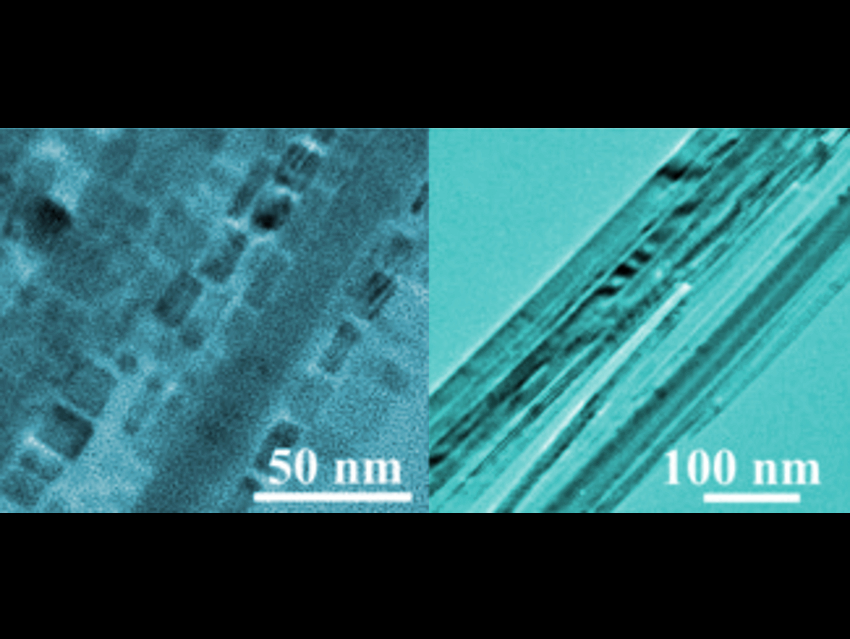Perovskite quantum dots (PQDs) are a class of efficient emitters. They show high brightness, sharp emission, and color tunability. However, they are prone to form defects on their surface. These defects impact the mechanical, electrical, and optical behavior of quantum dots—usually negatively.
Osman M. Bakr, King Abdullah University of Science and Technology (KAUST), Thuwal, Saudi Arabia, Edward H. Sargent, University of Toronto, Canada, and colleagues have used these naturally occurring defects as anchoring sites to assemble CsPbBr3 PQDs into nanowires with lengths of several millimeters. The PQDs were prepared using a hot‐injection method. They slowly and selectively form nanowires (pictured right) in the presence of sulfur anions. According to the team, the sulfur anions bridge adjacent PQDs by filling the Br vacancies and, thus, assist the self-assembly.
According to the researchers, this work shows a positive way to use surface vacancies in PDQs. This vacancy induced self‐assembly sheds new light on the surface chemistry of the PQDs and could open up a new path for fabricating perovskite nanowires for optoelectronic applications, including transistors, lasers, and more.
- Halogen Vacancies Enable Ligand-Assisted Self-Assembly of Perovskite Quantum Dots into Nanowires,
Jun Pan, Xiyan Li, Xiwen Gong, Jun Yin, Dianli Zhou, Lutfan Sinatra, Renwu Huang, Jiakai Liu, Jie Chen, Ibrahim Dursun, Ahmed M. El-Zohry, Makhsud I. Saidaminov, Hong-Tao Sun, Omar F. Mohammed, Changhui Ye, Edward H. Sargent, Osman M. Bakr,
Angew. Chem. Int. Ed. 2019.
https://doi.org/10.1002/anie.201909109




